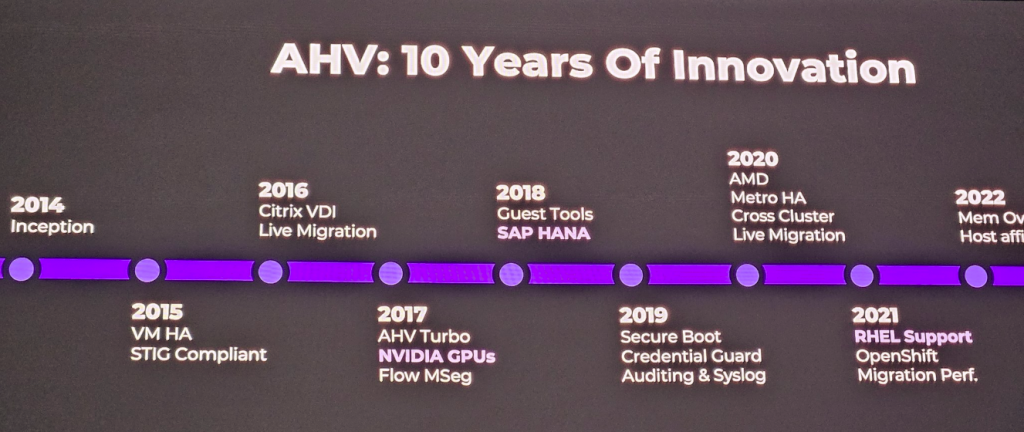During the last .NEXT event there was a special celebration: 10 years ago Nutanix AHV was born!
Ten years ago, Nutanix started on a groundbreaking initiative to develop a new enterprise hypervisor named Acropolis, now known as the AHV hypervisor. Inspired by the public cloud approach to virtualization, it was built as an enterprise hypervisor tailor made for the cloud era.
I’ve start writing about AHV in this post (June 2015), but the product was already in early stages some months before.

The Nutanix Acropolis Hypervisor (AHV) was born of humble yet ambitious beginnings, just a few short years after startup Nutanix hit the scene with its pioneering hyperconverged infrastructure (HCI).
After a decade of relentless innovation, AHV has evolved into a mature enterprise hypervisor, trusted by some of the world’s largest organizations. Not only does AHV deliver critical enterprise capabilities required for supporting the most demanding enterprise workloads, it also delivers unmatched simplicity for deploying and managing various workloads at scale.
And now is recognized as one of the main hypervisors: certificed for most of the business applications and also for several enterprise backup products.
Note that the Nutanix Cloud Infrastructure (NCI) software was designed to be hypervisor agnostic, with early versions built to deliver hyperconverged storage to virtual infrastructure deployments. And still it’s hypervisor agnostic: AHV is an option, but you can still choose to use VMware vSphere or Microsoft Hyper-V!
The pro of using AHV is having a full-stack solution, that enables streamlined operations not previously possible: from one-click full stack patching and upgrades to plug-and-play self-service workload provisioning, along with optimized data path for high-performance storage. The tightly integrated architecture also facilitated focused and streamlined development efforts, enabling AHV to support advanced virtualization features within a few short years.
To learn more, read also about the origin of Nutanix AHV hypervisor.













